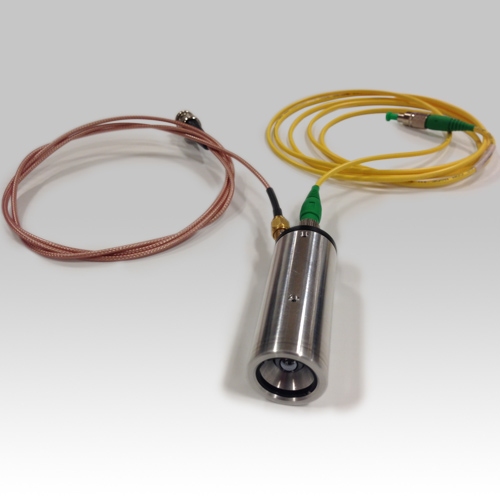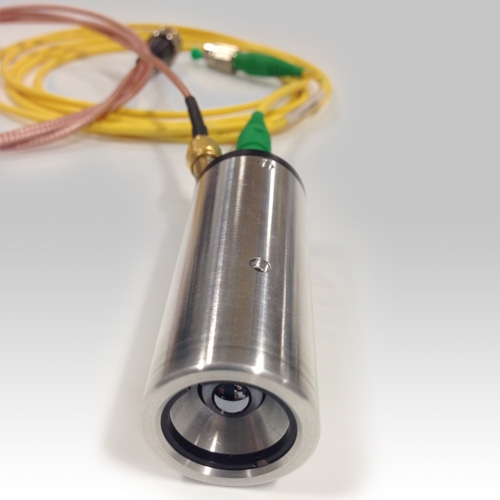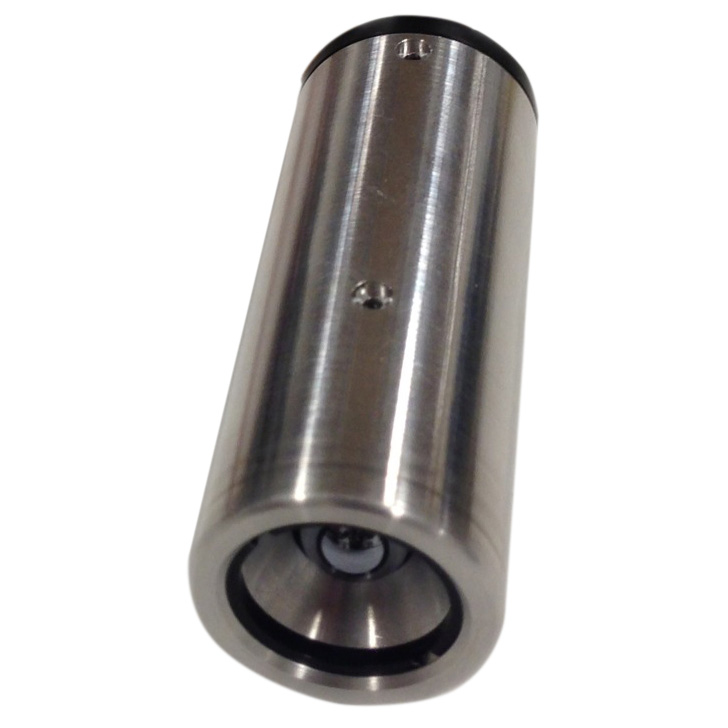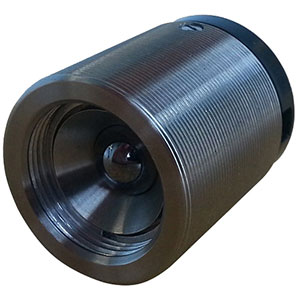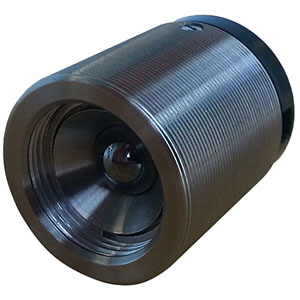Terahertz Fiber Coupled Sensor 1550 nm, 20 um high power dipole (T-Era-20D-1550-Fiber)
- Fiber-coupled Enclosure.
- Rugged Packaging.
- Large THz Signal.
- Integrated Silicon Lens.
- Easy to Mount.
- Standard 01' Treaded Body.
- Ready to Use.
The T-Era-20D-1550-Fiber terahertz photoconductive antenna (THz-PCA) is used to generate and detect high power and wideband terahertz pulses in THz time-domain systems. The T-Era-20D-1550-Fiber THz-PCA is made on high resistive ultra-fast epitaxially grown multi-quantum well InGaAs-InAlAs substrates and is packaged in TeTechS' patent pending terahertz chip fiber coupled enclosure module. The enclosure module houses the THz-PCA with a collimating high-resistive silicon lens attached to the back side of the THz-PCA chip, an FC/APC fiber connector and optical collimating and focusing lenses.
The device is packaged in a modular format so that it is easy to change the THz-PCA chip inside the enclosure at a fraction of cost. The device is shipped with the silicon lens aligned and packaged on the back side of the THz-PCA chip. The silicon lens can be re-aligned after changing the THz-PCA chip using our silicon lens setting fixtures.
An input bias voltage can be applied to the chip through an isolated MMCX connector. In the receiving operation mode, the detected THz photocurrent can be measured through the MMCX connector. The standard 01' treaded body makes it convenient to attach the module to other standard optical components or mount it on an optical bench.
When excited by optical pulses with 10 mW average optical power, a pair of transmitter and receiver T-Era-20D-1550-Fiber THz-PCAs generate 0.5 nA peak terahertz photocurrent on the receiver antenna with 50 dB terahertz power spectrum dynamic range.
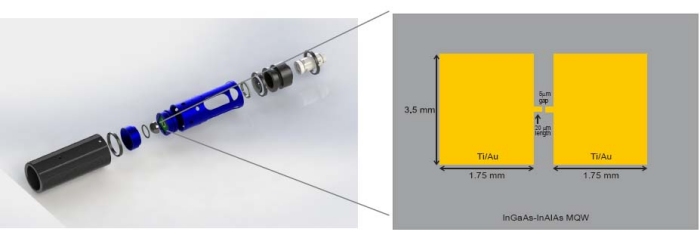
- Terahertz Spectroscopy.
- Terahertz Imaging.
- Material characterization.
- Material sensing.
- Non-destructive test.
- Terahertz spectroscopy.
- Hidden object detection.
- Product inspection.
- Manufacturing quality control.
- Material identification, such as: plastics; pulp and paper; gels organic powders; adhesives.
- Thickness measurement and uniformity analysis.
- Coating and thin film analysis.
- Additives analysis.
- Electronic chip fault analysis.
- THz Time-domain Systems.
A typical THz pulse and its corresponding power spectrum generated by a T-Era-20D-1550-Fiber transmitter module and detected by a T-Era-20D-1550-Fiber receiver module in a fiber coupled terahertz time-domain system. Excited by 100fs optical pulses with 15mW average power the T-Era-20D-1550-Fiber THz-PCAs generate 0.5nA peak terahertz photocurrent with more than 50dB THz power spectrum dynamic range.
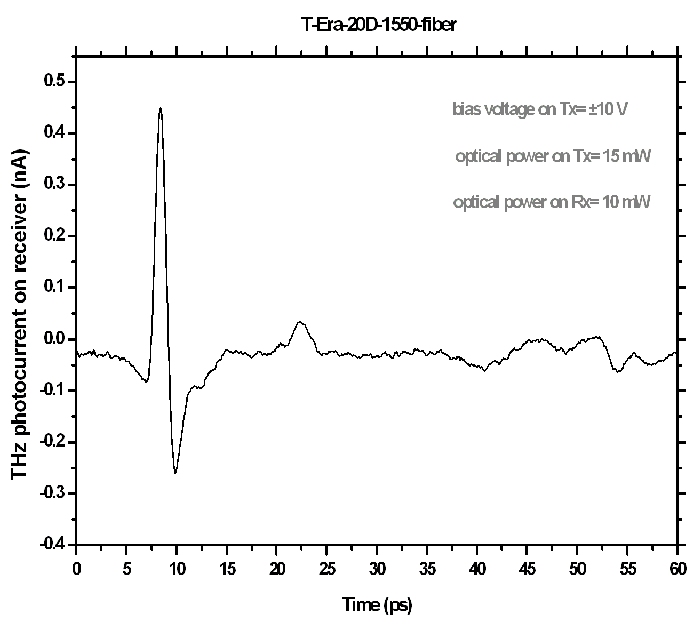
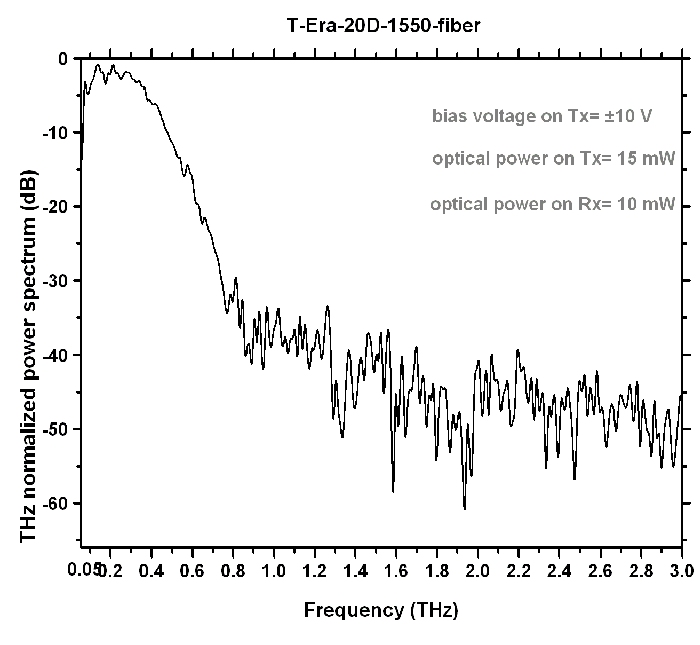
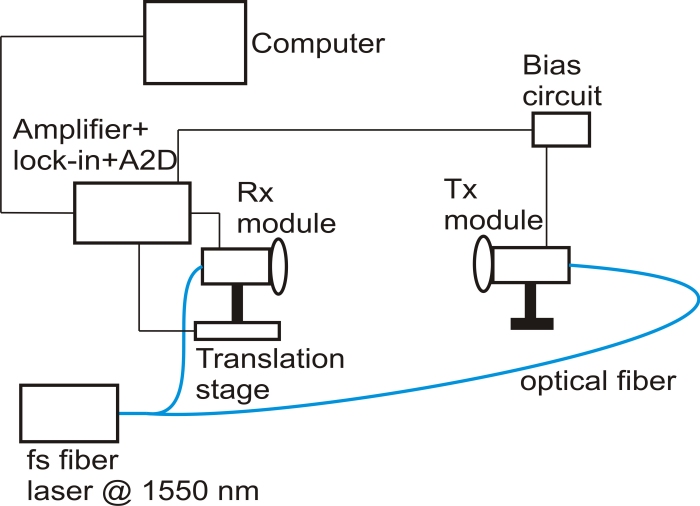
Terahertz technology has entered into an era with ever-growing applications in material spectroscopy and sensing, monitoring and spectroscopy in pharmaceutical industry and science, food industry, security, aerospace, oil industry, medical imaging, biology and medicine, and high-data-rate communications. Recent advances in semiconductor, laser, and optical technologies have made terahertz spectrum accessible to many technologists and scientists in diverse areas, ranging from biology and medicine to chemical, pharmaceutical, and environmental sciences to revisit their problems under the light of terahertz waves, thanks to the substantial growth of adjacent telecom, semiconductor, and laser markets in the recent years.
Product Specification:
| Optical Excitation Wavelength: | 1540 nm - 1560 nm |
| Average Optical Power: | 1 mW - 15 mW |
| Bias Voltage: | 1V - 15V |
| Dark Resistance: | 0.276 MΩ |
| Spectrum Bandwidth: | >1 THz |
| Power Spectrum Dynamic Range: | 50 dB |
| Size (O.D., L): | 1", 2.5" |
A typical THz pulse and its corresponding power spectrum generated by a T-Era-20D-1550-Fiber transmitter module and detected by a T-Era-20D-1550-Fiber receiver module in a fiber coupled terahertz time-domain system. Excited by 100fs optical pulses with 15mW average power the T-Era-20D-1550-Fiber THz-PCAs generate 0.5nA peak terahertz photocurrent with more than 50dB THz power spectrum dynamic range.
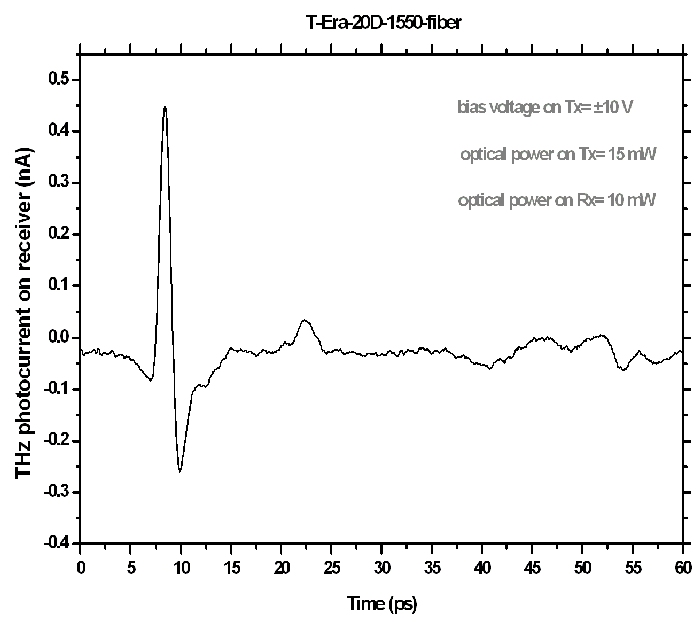
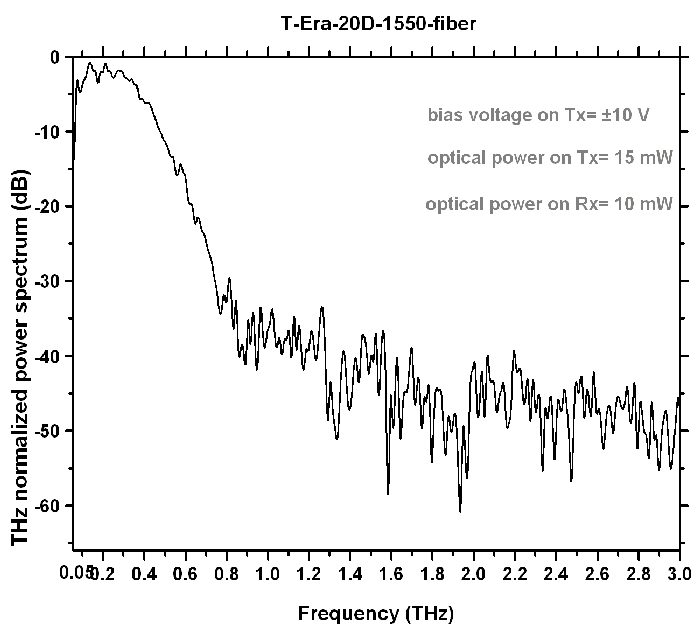
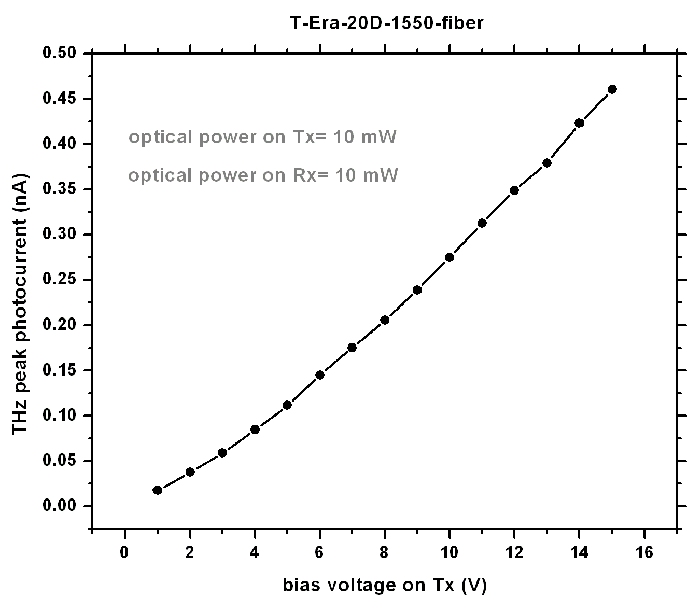
If you are interested in ordering a large quantity of items you may qualify for volume pricing discounts. Volume Discount Pricing is a great way for customers to save big on large, bulk orders of most items available in our store. Please send a bulk order request to our friendly sales staff so they may create a quote and provide personal service for your order! You will receive a response within 1-2 business days and our office hours are Monday through Friday, 8am-5pm CST.
- Let us know what products & the quantities you are interested in.
- Get a detailed quote from a dedicated sales rep.
- Our warehouse ships directly to you.
- You enjoy the savings & are now a preferred customer.

